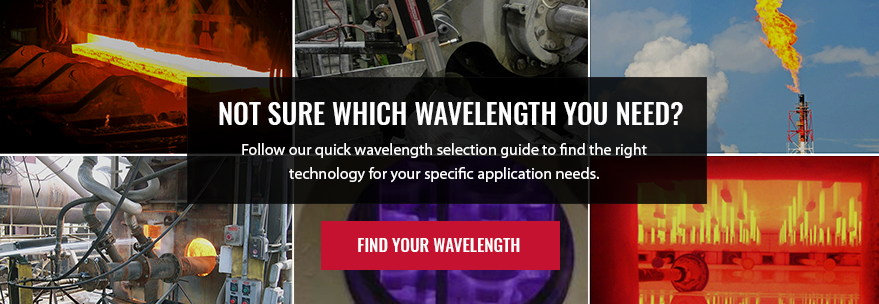
What is an Infrared Thermometer?
Infrared thermometers sometimes called temperature guns, laser thermometers, or pyrometers are non-contact temperature sensors that can be used in a wide range of manufacturing processes to accurately measure the temperature of a given target or material. These devices are preferred over traditional thermometers and thermocouples because of their ability to make an accurate non-contact temperature measurement; meaning the device does not need to make any thermal contact with the surface to measured. This major advantage allows for continuous process measurements without the need for an operator to stop the line in order to make a contact measurement with a probe. Further, the non-contact approach also allows for continuous temperature monitoring and feedback control of both stationary and moving objects greatly improving production efficiency. Pyrometers offer a remarkable advantage when measuring objects that are too difficult to reach or too dangerous to touch which also adds an unmatched safety benefit.
What Temperatures Can They Accurately Measure?
Infrared pyrometers measure the electromagnetic radiation emitted from an object using a detector that is filtered at a specified wavelength or wavelength range to infer a temperature value based on blackbody radiation. The wavelength of the detector is what determines the actual measuring range of the pyrometer. Typically, infrared pyrometers are filtered in the mid-IR range of wavelengths but they can be filtered from as low as 0.65um all the way up to 20um allowing them to accurately measure from (-100°F to 10000°F). Williamson pyrometers are available in several different wavelength styles allowing us to design pyrometers capable of accurately measuring from (-50°F to 8000°F).

Emission band for polyester film
The chart above shows the transmission of polyester film with different thicknesses across the mid-ir range. As you can see, right around 7.9µm polyester film is quite opaque. To measure a material like this we would need to select a wavelength where the target is least reflective and most opaque (7.9µm). This same principle applies for all materials and is especially true if there are optical obstructions present, we want to choose a specific wavelength where the target is last reflective and most opaque or when optical obstructions are most transparent.
Infrared pyrometers, like Williamson’s, are all highly accurate under laboratory conditions where the emissivity of the target is known and constant and optical interferences such as smoke, dust, water vapor, plasma, and flames are not present. More often than not these Goldilocks like conditions are not always feasible. So, the challenge lies in selecting a pyrometer thoughtfully filtered at an appropriate wavelength to ensure accuracy whenever these obstacles are present such as in a petrochemical plant, steel mill, aluminum mill, vacuum furnaces or process and many more manufacturing processes.

